Engaging Students Through Active Learning Techniques
Engage students with active learning - hands-on, discussion-based strategies that boost retention, critical thinking, and participation.


Engage students with active learning - hands-on, discussion-based strategies that boost retention, critical thinking, and participation.
Active learning involves students in the learning process through direct interaction and experience, shifting away from passive consumption of information. Research confirms that students engaging in active learning achieve better academic results than those in traditional classroom settings. This approach integrates various strategies like discussion, practice, and application to actively involve students. Such methods activate multiple neural pathways, boosting cognitive processing and retention of information.
Incorporating learning through participation strategies can transform the educational journey. Educators can use these methods to inspire deeper engagement and motivation among students. This leads to richer and more rewarding learning experiences.
To illustrate the wide range of activities in active learning, consider the following:
These approaches nurture an environment conducive to active participation and conceptual understanding.
Active learning shifts the focus from passive knowledge absorption to active participation. This approach stands in contrast to traditional instruction methods. In active learning environments, students engage directly, improving performance in areas like science, engineering, and mathematics. Research consistently shows that this engagement leads to better learning outcomes.
Lilli Nielsen's work forms the philosophical basis of active learning, highlighting the significance of independent exploration. Engaging learners in this manner creates environments that are suited to their developmental stages. By encouraging self-reliant learning, students decrease their dependency on others.
Active learning techniques activate multiple neural pathways. This simultaneous activation fosters strong cognitive processing and enhances information retention. Educators utilizing active learning strategies cultivate a space where independent and effective learning thrives.
Active learning and constructivist learning theory share many principles. Constructivism emphasizes the cognitive, meta-cognitive, evolving, and effective aspects of learning. Knowledge construction relies heavily on the learner's existing knowledge base. Learners must be self-aware to fully engage in cognition during learning.
David Ausubel pointed out that prior knowledge plays a crucial role in meaningful reception learning. This aligns with Jerome Bruner's concept of learning through discovery, where guided exploration facilitates student involvement. Teachers provide scenarios that allow students to analyze and experiment.
Knowledge in active learning isn't immediately mastered. It requires time, reflection, and iteration. The ongoing process of constructing, recording, and absorbing knowledge enriches the educational journey, fostering deep understanding over time.

Effective teachers exhibit social congruence by creating harmonious, open environments. Students feel comfortable expressing themselves, knowing that mistakes are part of learning. These educators skillfully integrate subject-matter expertise, inspiring students to engage more deeply with content.
Teachers with deep knowledge offer substantial support, enhancing student success in classroom settings. Their cognitive congruence allows them to simplify complex ideas. This skill builds student confidence in their learning abilities and promotes understanding.
Engaged teachers maintain vibrant classroom discussions by posing questions and encouraging dialogue. These interactions increase overall student participation and enthusiasm, making the learning process dynamic and inclusive. The guidance of effective teachers ensures students remain active, curious, and motivated.
Active learning significantly boosts student engagement. This method stimulates interest and motivation, making the learning process more enjoyable and effective. Research demonstrates that active learning not only enhances student engagement but also improves long-term retention of course content.
Active participation involves collaboration and teamwork, allowing learners to develop crucial interpersonal skills. These skills prove beneficial in workplace settings later on. Classrooms incorporating active learning components foster deeper engagement and a stronger connection with peers. This environment also increases interaction with instructors. Students benefit from a sense of social belonging and improved classroom rapport.
Active learning strategies can transform educational experiences. Engaging students goes beyond simply keeping them attentive. Consider the following active learning techniques:
These activities encourage active participation, enhancing student learning and engagement.
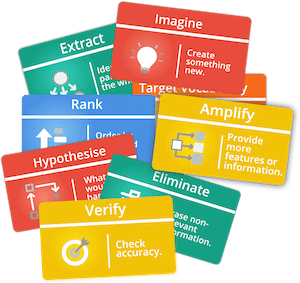
Active learning techniques significantly enhance information retention. Students engage actively with course content through discussions, debates, and practical applications. This engagement personalizes learning experiences and cultivates positive emotions that contribute to memorable educational moments. The personalization process improves retention. Furthermore, these strategies promote the development of critical thinking skills, enabling students to better analyze and evaluate information.
Active learning strategies enhance retention by fostering active engagement with content. Discussions, debates, and practical applications allow learners to process information more effectively. This active engagement personalizes the learning experience, making it more memorable. The Information Processing Theory supports the notion that active learning aids retention by moving information through sensory memory, short-term memory, and ultimately to long-term memory.
Critical thinking skills are cultivated through active learning, as students are encouraged to analyze, evaluate, and synthesize information. Instead of passively absorbing data, learners engage deeply with material. Modern educational programs recognize active learning as an essential component. By enhancing competencies across fields such as social sciences, humanities, hard sciences, and vocational subjects, active learning prepares students for real-world challenges.
Collaborative activities during active learning help develop interpersonal skills. These activities teach students how to work effectively as part of a team. Such skills prove particularly beneficial in workplace environments, where teamwork and communication are vital. Active learning prepares individuals for success in diverse and dynamic work settings.
Active learning strategies make the learning process engaging and interactive. These methods encourage students to actively participate in their own education, which makes learning more enjoyable. For example, the Think-Pair-Share technique facilitates collaboration. Here, students consider a problem on their own, then pair up with another student to discuss ideas, and finally, share their conclusions with the class. This technique enhances peer learning and promotes active participation.
Research confirms that active learning environments boost student learning outcomes. These environments reduce failure rates and improve performance on tests. Unlike traditional classrooms that focus on memorization, active learning encourages the exploration and engagement with information. Institutions recognize these benefits and invest in transforming courses to support active engagement.

Active learning techniques offer major advantages over traditional lecture-based instruction. They improve student engagement and retention rates. In university courses, especially STEM fields, research shows that these methods decrease failure rates. This is particularly beneficial for students from underrepresented groups.
The National Education Technology Plan (US) supports the creation of active learning environments. These environments should encourage collaboration, inquiry-based learning, and the use of technology. Incorporating technology into courses allows instructors to rethink teaching methods. This enables the creation of inclusive, flexible spaces that cater to diverse learning needs.
Active learning can involve breaking lectures into smaller parts. Within these parts, interactive elements hold students' attention. Guided questions for readings and peer discussions further enhance understanding and engagement.
Peer collaboration stands as a key element in active learning. The Think-Pair-Share method exemplifies this, encouraging students to engage by reflecting, discussing, and sharing ideas. Similarly, the Three-Step Interviews foster peer learning by involving students as interviewers, interviewees, and observers. This method reinforces deep reflection and active engagement.
Active learning initiatives in some departments, like Mathematics, have transformed courses by implementing collaborative problem-solving activities. Here, students work together and receive guidance from instructors. These collaborative activities have been particularly emphasized in large classes, involving up to 1,500 students in peer feedback processes.
Research supports the effectiveness of peer collaboration in active learning. Students show improved engagement, retention of course content, and achieve higher grades overall. Active learning techniques, with a focus on peer interaction, significantly enhance the educational experience.
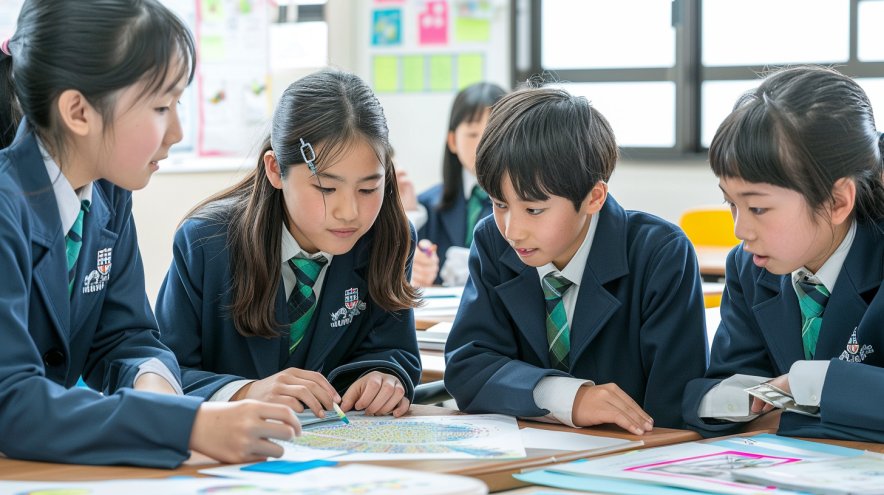
Active learning transforms passive knowledge intake into dynamic, student-centered experiences. By integrating Structural Learning tools into the classroom, teachers can create environments where students actively construct knowledge, engage in reasoning, and develop a deeper understanding of subject matter.
The Beyond Rote Memorisation framework highlights five key strategies that align well with active learning: making connections, reasoning in context, collaboration, analogies, and breaking concepts down. Below, we explore practical ways to embed these principles into the classroom using Writer’s Block, visual tools, and talk-based strategies.
Hands-on learning opportunities are essential for engaging students in experiential learning. Writer’s Block provides a physical and visual way for students to organize and structure their thinking. Instead of merely absorbing information, students construct knowledge by arranging blocks to represent key ideas. This method enables them to see relationships between concepts and deepen their understanding through spatial reasoning.
Try This:

Beyond Rote Memorisation emphasizes that reasoning thrives in context. Engaging students in structured discussions encourages them to verbalize their understanding, refine their thoughts, and co-construct knowledge with their peers. Using structured talk roles from the Talk Toolkit, such as “challenger,” “builder,” and “summariser,” ensures that all students participate meaningfully.
Try This:
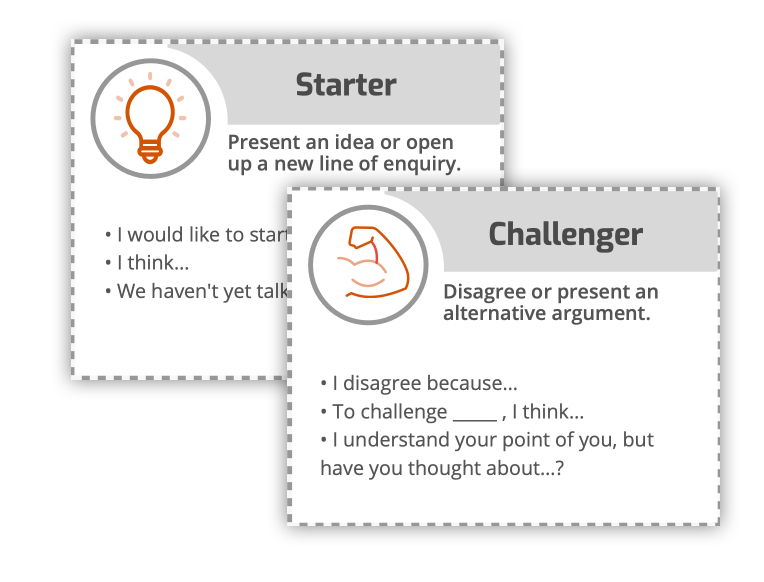
One of the key strategies in Beyond Rote Memorisation is making analogies to help students understand abstract concepts. Analogies allow students to compare new information with something familiar, strengthening their ability to transfer knowledge across different contexts.
Try This:
Active learning often requires students to work through complex ideas step by step. Using the Thinking Framework, teachers can scaffold student thinking by modeling reasoning strategies and guiding students through problem-solving processes.
Try This:
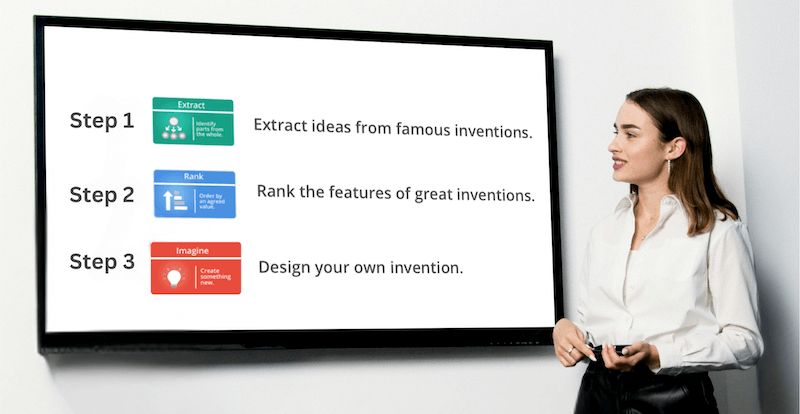
By integrating these Structural Learning strategies into the classroom, teachers can create active learning environments where students think, question, and engage deeply with content. These methods not only move beyond rote memorization but also foster critical thinking, collaboration, and long-term retention.
Active learning fits well in large classes by using cost-effective technology intentionally. Despite challenges like the need for more teaching assistants and materials, instructors can effectively implement active learning. Using these techniques addresses disengagement, offering every student a chance to interact with the topic. Integrating short activities during lectures helps improve understanding and retention while maintaining traditional lectures.
In large classrooms, keeping students engaged can be trickier. Tools like polling and quizzes boost participation. Pre-lecture work and collaborative projects also promote interaction. Identifying students who struggle early on is important. Doing so allows for community-building strategies that make participation inclusive. Moreover, engaging students through debates and simulations enhances critical thinking. Activities like role-playing and group discussions support problem-solving.
Group work plays a vital role in active learning. It fosters teamwork and develops interpersonal skills. Students can analyze, evaluate, and synthesize information through group projects. This approach aligns with constructivist principles by encouraging cognitive strategies like questioning and clarifying. Case studies and group projects motivate students and enhance their engagement. These activities combat the disengagement often seen in traditional lecture settings, making learning more enjoyable.
To summarize these strategies in an accessible format, the following table outlines key active learning techniques and their benefits in large classroom settings:
| Active Learning Technique | Benefits |
|---|---|
| Polling and Quizzes | Increase student engagement and quick feedback |
| Pre-lecture Work | Prepares students ahead of time for active participation |
| Collaborative Group Work | Develops teamwork, problem-solving, and decision-making skills |
| Debates and Role-Playing | Enhances critical thinking and engagement |
| Reflection Activities | Promotes metacognition for deeper student engagement |
These strategies, integrated effectively, create a dynamic learning environment in large classes, making active learning accessible to all students.
Technology plays a vital role in transforming traditional classrooms into dynamic hubs of active learning. By integrating multimedia tools, educators foster a more engaging and interactive learning process. Videos, movies, and educational games serve as interactive methods that capture students' attention.
Blending technology with active learning can enhance pedagogical effectiveness and aligns with modern educational demands. Research highlights the positive impact: better behavior, effective learning outcomes, and increased student motivation. Incorporating technology allows educators to maintain their unique teaching style while utilizing digital learning tools to enrich the educational experience.
Active learning transforms education by emphasizing student engagement in the learning process. By taking an active role, students construct their own knowledge and develop higher-order thinking skills. Research shows that students achieve better learning outcomes through active involvement, which improves retention and understanding.
Incorporating active learning strategies fosters a culture of continuous learning and adaptability. This is essential in today's dynamic global environment. Not only does it enhance individual performance, but it also shifts classroom culture from competition to collaboration. This creates a more supportive learning environment.
Institutions that implement active learning initiatives report improved student performance, better retention of content, and higher overall course grades. This shift benefits both students and educators by encouraging active participation. Moreover, it strengthens conceptual knowledge and fosters a sense of community among students in classes.
Active learning approaches, such as class discussions, experiential learning, and active learning exercises, offer a wide range of educational experiences that enrich the traditional classroom setting. As students engage more deeply, they become better prepared for challenges beyond the classroom, making active learning an effective strategy for transforming education.
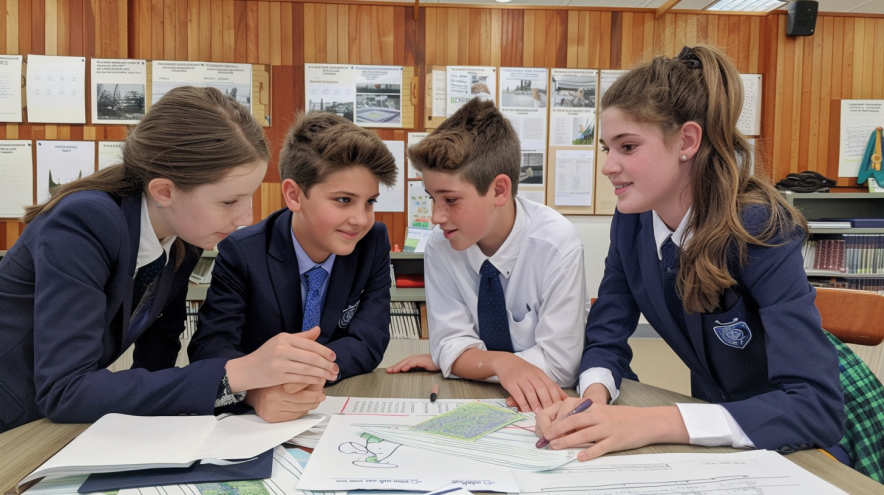
Active learning strategies have gained prominence in modern education, emphasizing student engagement through interactive classroom activities, problem-solving skills, and diverse teaching approaches. The following five studies explore the efficacy of active learning, focusing on physical space, class activities, instant feedback, and students with opportunities to develop critical skills.
1. Perez (2019) - Active Learning and Self-Efficacy
This study highlights how active learning, through classroom activities and instant feedback, increases students' self-efficacy. The teaching approach engages students with opportunities for problem-solving skills, utilizing a range of teaching strategies within the physical space of biology classrooms.
2. Bett & Cooper (2018) - Perceptions of Active Learning
Examining flipped classrooms and team-based learning, this study explores how class activities and varied teaching approaches improve student engagement. Faculty and students acknowledge active learning’s benefits, emphasizing instant feedback and a range of teaching strategies that optimize the classroom space.
3. Nafea (2020) - Multi-Strategy Active Learning
Investigating computer science students, this study finds that diverse teaching strategies—self-study, peer reviews, and interactive tools—enhance learning outcomes. The research emphasizes problem-solving skills, classroom activities, and students with opportunities to engage actively within a structured physical space.
4. Hilmi & Summiyani (2023) - Implementing Active Learning
This research underscores the importance of educators using active learning to foster student self-development. It highlights the significance of physical space, class activities, and instant feedback in providing students with opportunities to engage in meaningful problem-solving within the classroom environment.
5. Kettler, Guthrie & Omelchenko (2017) - Active Learning in Biology
Comparing student-centered and traditional teaching approaches, this study reveals that active learning improves motivation and self-efficacy. It focuses on how class activities and diverse teaching strategies create an engaging physical space for students with opportunities for problem-solving and instant feedback.
Active learning involves students in the learning process through direct interaction and experience, shifting away from passive consumption of information. Research confirms that students engaging in active learning achieve better academic results than those in traditional classroom settings. This approach integrates various strategies like discussion, practice, and application to actively involve students. Such methods activate multiple neural pathways, boosting cognitive processing and retention of information.
Incorporating learning through participation strategies can transform the educational journey. Educators can use these methods to inspire deeper engagement and motivation among students. This leads to richer and more rewarding learning experiences.
To illustrate the wide range of activities in active learning, consider the following:
These approaches nurture an environment conducive to active participation and conceptual understanding.
Active learning shifts the focus from passive knowledge absorption to active participation. This approach stands in contrast to traditional instruction methods. In active learning environments, students engage directly, improving performance in areas like science, engineering, and mathematics. Research consistently shows that this engagement leads to better learning outcomes.
Lilli Nielsen's work forms the philosophical basis of active learning, highlighting the significance of independent exploration. Engaging learners in this manner creates environments that are suited to their developmental stages. By encouraging self-reliant learning, students decrease their dependency on others.
Active learning techniques activate multiple neural pathways. This simultaneous activation fosters strong cognitive processing and enhances information retention. Educators utilizing active learning strategies cultivate a space where independent and effective learning thrives.
Active learning and constructivist learning theory share many principles. Constructivism emphasizes the cognitive, meta-cognitive, evolving, and effective aspects of learning. Knowledge construction relies heavily on the learner's existing knowledge base. Learners must be self-aware to fully engage in cognition during learning.
David Ausubel pointed out that prior knowledge plays a crucial role in meaningful reception learning. This aligns with Jerome Bruner's concept of learning through discovery, where guided exploration facilitates student involvement. Teachers provide scenarios that allow students to analyze and experiment.
Knowledge in active learning isn't immediately mastered. It requires time, reflection, and iteration. The ongoing process of constructing, recording, and absorbing knowledge enriches the educational journey, fostering deep understanding over time.

Effective teachers exhibit social congruence by creating harmonious, open environments. Students feel comfortable expressing themselves, knowing that mistakes are part of learning. These educators skillfully integrate subject-matter expertise, inspiring students to engage more deeply with content.
Teachers with deep knowledge offer substantial support, enhancing student success in classroom settings. Their cognitive congruence allows them to simplify complex ideas. This skill builds student confidence in their learning abilities and promotes understanding.
Engaged teachers maintain vibrant classroom discussions by posing questions and encouraging dialogue. These interactions increase overall student participation and enthusiasm, making the learning process dynamic and inclusive. The guidance of effective teachers ensures students remain active, curious, and motivated.
Active learning significantly boosts student engagement. This method stimulates interest and motivation, making the learning process more enjoyable and effective. Research demonstrates that active learning not only enhances student engagement but also improves long-term retention of course content.
Active participation involves collaboration and teamwork, allowing learners to develop crucial interpersonal skills. These skills prove beneficial in workplace settings later on. Classrooms incorporating active learning components foster deeper engagement and a stronger connection with peers. This environment also increases interaction with instructors. Students benefit from a sense of social belonging and improved classroom rapport.
Active learning strategies can transform educational experiences. Engaging students goes beyond simply keeping them attentive. Consider the following active learning techniques:
These activities encourage active participation, enhancing student learning and engagement.

Active learning techniques significantly enhance information retention. Students engage actively with course content through discussions, debates, and practical applications. This engagement personalizes learning experiences and cultivates positive emotions that contribute to memorable educational moments. The personalization process improves retention. Furthermore, these strategies promote the development of critical thinking skills, enabling students to better analyze and evaluate information.
Active learning strategies enhance retention by fostering active engagement with content. Discussions, debates, and practical applications allow learners to process information more effectively. This active engagement personalizes the learning experience, making it more memorable. The Information Processing Theory supports the notion that active learning aids retention by moving information through sensory memory, short-term memory, and ultimately to long-term memory.
Critical thinking skills are cultivated through active learning, as students are encouraged to analyze, evaluate, and synthesize information. Instead of passively absorbing data, learners engage deeply with material. Modern educational programs recognize active learning as an essential component. By enhancing competencies across fields such as social sciences, humanities, hard sciences, and vocational subjects, active learning prepares students for real-world challenges.
Collaborative activities during active learning help develop interpersonal skills. These activities teach students how to work effectively as part of a team. Such skills prove particularly beneficial in workplace environments, where teamwork and communication are vital. Active learning prepares individuals for success in diverse and dynamic work settings.
Active learning strategies make the learning process engaging and interactive. These methods encourage students to actively participate in their own education, which makes learning more enjoyable. For example, the Think-Pair-Share technique facilitates collaboration. Here, students consider a problem on their own, then pair up with another student to discuss ideas, and finally, share their conclusions with the class. This technique enhances peer learning and promotes active participation.
Research confirms that active learning environments boost student learning outcomes. These environments reduce failure rates and improve performance on tests. Unlike traditional classrooms that focus on memorization, active learning encourages the exploration and engagement with information. Institutions recognize these benefits and invest in transforming courses to support active engagement.

Active learning techniques offer major advantages over traditional lecture-based instruction. They improve student engagement and retention rates. In university courses, especially STEM fields, research shows that these methods decrease failure rates. This is particularly beneficial for students from underrepresented groups.
The National Education Technology Plan (US) supports the creation of active learning environments. These environments should encourage collaboration, inquiry-based learning, and the use of technology. Incorporating technology into courses allows instructors to rethink teaching methods. This enables the creation of inclusive, flexible spaces that cater to diverse learning needs.
Active learning can involve breaking lectures into smaller parts. Within these parts, interactive elements hold students' attention. Guided questions for readings and peer discussions further enhance understanding and engagement.
Peer collaboration stands as a key element in active learning. The Think-Pair-Share method exemplifies this, encouraging students to engage by reflecting, discussing, and sharing ideas. Similarly, the Three-Step Interviews foster peer learning by involving students as interviewers, interviewees, and observers. This method reinforces deep reflection and active engagement.
Active learning initiatives in some departments, like Mathematics, have transformed courses by implementing collaborative problem-solving activities. Here, students work together and receive guidance from instructors. These collaborative activities have been particularly emphasized in large classes, involving up to 1,500 students in peer feedback processes.
Research supports the effectiveness of peer collaboration in active learning. Students show improved engagement, retention of course content, and achieve higher grades overall. Active learning techniques, with a focus on peer interaction, significantly enhance the educational experience.

Active learning transforms passive knowledge intake into dynamic, student-centered experiences. By integrating Structural Learning tools into the classroom, teachers can create environments where students actively construct knowledge, engage in reasoning, and develop a deeper understanding of subject matter.
The Beyond Rote Memorisation framework highlights five key strategies that align well with active learning: making connections, reasoning in context, collaboration, analogies, and breaking concepts down. Below, we explore practical ways to embed these principles into the classroom using Writer’s Block, visual tools, and talk-based strategies.
Hands-on learning opportunities are essential for engaging students in experiential learning. Writer’s Block provides a physical and visual way for students to organize and structure their thinking. Instead of merely absorbing information, students construct knowledge by arranging blocks to represent key ideas. This method enables them to see relationships between concepts and deepen their understanding through spatial reasoning.
Try This:

Beyond Rote Memorisation emphasizes that reasoning thrives in context. Engaging students in structured discussions encourages them to verbalize their understanding, refine their thoughts, and co-construct knowledge with their peers. Using structured talk roles from the Talk Toolkit, such as “challenger,” “builder,” and “summariser,” ensures that all students participate meaningfully.
Try This:

One of the key strategies in Beyond Rote Memorisation is making analogies to help students understand abstract concepts. Analogies allow students to compare new information with something familiar, strengthening their ability to transfer knowledge across different contexts.
Try This:
Active learning often requires students to work through complex ideas step by step. Using the Thinking Framework, teachers can scaffold student thinking by modeling reasoning strategies and guiding students through problem-solving processes.
Try This:

By integrating these Structural Learning strategies into the classroom, teachers can create active learning environments where students think, question, and engage deeply with content. These methods not only move beyond rote memorization but also foster critical thinking, collaboration, and long-term retention.
Active learning fits well in large classes by using cost-effective technology intentionally. Despite challenges like the need for more teaching assistants and materials, instructors can effectively implement active learning. Using these techniques addresses disengagement, offering every student a chance to interact with the topic. Integrating short activities during lectures helps improve understanding and retention while maintaining traditional lectures.
In large classrooms, keeping students engaged can be trickier. Tools like polling and quizzes boost participation. Pre-lecture work and collaborative projects also promote interaction. Identifying students who struggle early on is important. Doing so allows for community-building strategies that make participation inclusive. Moreover, engaging students through debates and simulations enhances critical thinking. Activities like role-playing and group discussions support problem-solving.
Group work plays a vital role in active learning. It fosters teamwork and develops interpersonal skills. Students can analyze, evaluate, and synthesize information through group projects. This approach aligns with constructivist principles by encouraging cognitive strategies like questioning and clarifying. Case studies and group projects motivate students and enhance their engagement. These activities combat the disengagement often seen in traditional lecture settings, making learning more enjoyable.
To summarize these strategies in an accessible format, the following table outlines key active learning techniques and their benefits in large classroom settings:
| Active Learning Technique | Benefits |
|---|---|
| Polling and Quizzes | Increase student engagement and quick feedback |
| Pre-lecture Work | Prepares students ahead of time for active participation |
| Collaborative Group Work | Develops teamwork, problem-solving, and decision-making skills |
| Debates and Role-Playing | Enhances critical thinking and engagement |
| Reflection Activities | Promotes metacognition for deeper student engagement |
These strategies, integrated effectively, create a dynamic learning environment in large classes, making active learning accessible to all students.
Technology plays a vital role in transforming traditional classrooms into dynamic hubs of active learning. By integrating multimedia tools, educators foster a more engaging and interactive learning process. Videos, movies, and educational games serve as interactive methods that capture students' attention.
Blending technology with active learning can enhance pedagogical effectiveness and aligns with modern educational demands. Research highlights the positive impact: better behavior, effective learning outcomes, and increased student motivation. Incorporating technology allows educators to maintain their unique teaching style while utilizing digital learning tools to enrich the educational experience.
Active learning transforms education by emphasizing student engagement in the learning process. By taking an active role, students construct their own knowledge and develop higher-order thinking skills. Research shows that students achieve better learning outcomes through active involvement, which improves retention and understanding.
Incorporating active learning strategies fosters a culture of continuous learning and adaptability. This is essential in today's dynamic global environment. Not only does it enhance individual performance, but it also shifts classroom culture from competition to collaboration. This creates a more supportive learning environment.
Institutions that implement active learning initiatives report improved student performance, better retention of content, and higher overall course grades. This shift benefits both students and educators by encouraging active participation. Moreover, it strengthens conceptual knowledge and fosters a sense of community among students in classes.
Active learning approaches, such as class discussions, experiential learning, and active learning exercises, offer a wide range of educational experiences that enrich the traditional classroom setting. As students engage more deeply, they become better prepared for challenges beyond the classroom, making active learning an effective strategy for transforming education.

Active learning strategies have gained prominence in modern education, emphasizing student engagement through interactive classroom activities, problem-solving skills, and diverse teaching approaches. The following five studies explore the efficacy of active learning, focusing on physical space, class activities, instant feedback, and students with opportunities to develop critical skills.
1. Perez (2019) - Active Learning and Self-Efficacy
This study highlights how active learning, through classroom activities and instant feedback, increases students' self-efficacy. The teaching approach engages students with opportunities for problem-solving skills, utilizing a range of teaching strategies within the physical space of biology classrooms.
2. Bett & Cooper (2018) - Perceptions of Active Learning
Examining flipped classrooms and team-based learning, this study explores how class activities and varied teaching approaches improve student engagement. Faculty and students acknowledge active learning’s benefits, emphasizing instant feedback and a range of teaching strategies that optimize the classroom space.
3. Nafea (2020) - Multi-Strategy Active Learning
Investigating computer science students, this study finds that diverse teaching strategies—self-study, peer reviews, and interactive tools—enhance learning outcomes. The research emphasizes problem-solving skills, classroom activities, and students with opportunities to engage actively within a structured physical space.
4. Hilmi & Summiyani (2023) - Implementing Active Learning
This research underscores the importance of educators using active learning to foster student self-development. It highlights the significance of physical space, class activities, and instant feedback in providing students with opportunities to engage in meaningful problem-solving within the classroom environment.
5. Kettler, Guthrie & Omelchenko (2017) - Active Learning in Biology
Comparing student-centered and traditional teaching approaches, this study reveals that active learning improves motivation and self-efficacy. It focuses on how class activities and diverse teaching strategies create an engaging physical space for students with opportunities for problem-solving and instant feedback.